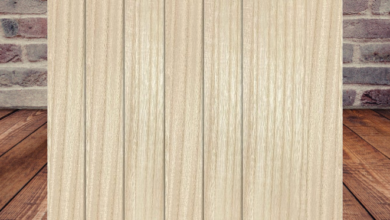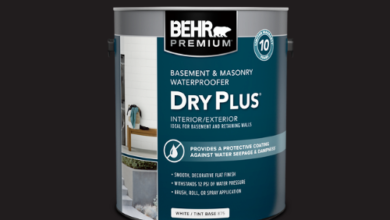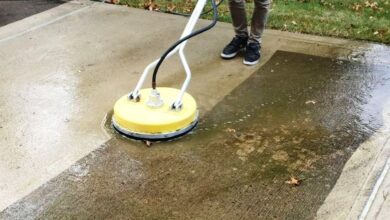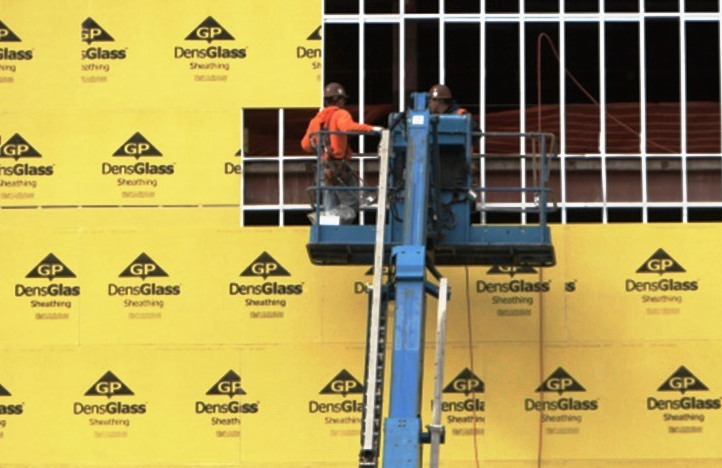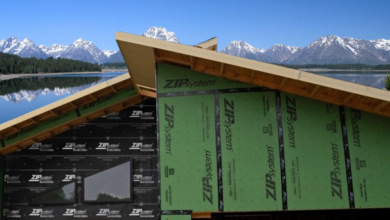How to Plaster Over Expanding Foam
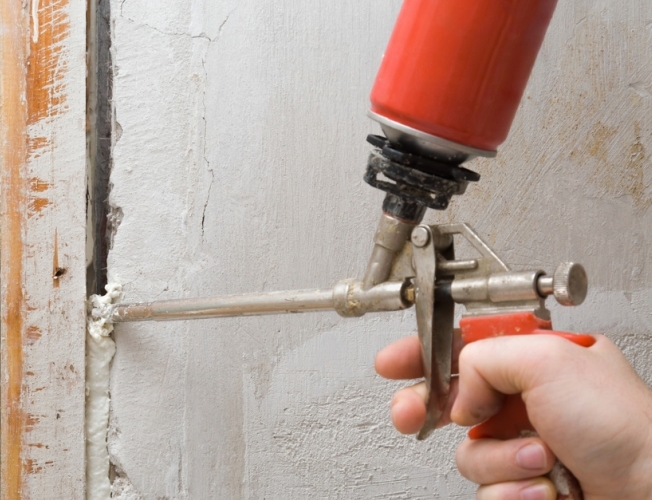
Plastering over expanding foam is possible, but it takes practice and expertise. It’s not the simplest DIY project.
But you should be able to plaster over expanding foam if you follow a few pointers and guidelines. Everything you need to know about plastering over expanding foam will be covered in this article.
Will Plaster Adhere To Expanding Foam?
Plaster adhesion to expanding foam is contingent upon the subsequent factors:
1. The Use of Expanding Foam
There are two primary types of expanding foams, as you will discover upon further investigation. First, there’s the standard expanding foam that’s present in most houses.
This kind is the one used for do-it-yourself projects, like patching tiny cracks and reinforcing disparate parts of a house.
The expanding foam used for insulation in homes is the other variety. This kind is sprayed from wall to wall, and it frequently calls for a skilled touch.
Because the latter type is intended for large-scale applications, plastering is considerably simpler.
It might not be the most plaster-friendly surface for the average expanding foam, but we’ll walk you through the steps to plaster over it.
additionally when plastering over foam that expands. You must verify compatibility. Some expanding foams specify on the label that the foam can be covered with plaster.
2. The Procedure for Applications
Because of the structure of expanding foam, getting plaster to adhere to it is usually a nightmare for do-it-yourselfers.
You might have trouble getting the plaster to adhere to the expanding foam if you lack the necessary skills and understanding. Be sure you conduct sufficient research before starting such a project.
3. The Project’s Size
An additional aspect that most people tend to ignore is the scope of a project. Overlaying plaster on top of expanding foam is more of a workaround than a suggested building technique.
Since it’s a hack, it works best in confined spaces. Nonetheless, the plaster will adhere for a considerable amount of time if you are plastering over a sizable area that has been packed with expanding foam.
But damage to that area will be very likely. Thus, take into account the size of the area you wish to work on before starting such a project.
How Should Expanding Foam Be Plasted Over?
Plastering over expanding foam is a challenging task, as previously mentioned. However, it’s not unfeasible. With the appropriate resources and expertise, it’s a project that can be completed. Here is a quick guide on how to do that.
Step 1: Assemble Your Tools and Gear
A few items are required to cover the expanding foam. A cutting tool, such as a hacksaw or sharp knife, is first required.
You are free to select any cutting tool you like, based on the surface you are working on. Thus, if you are cutting expanding foam on a tiny hole in the wall, you can also use a sharp blade.
Some screws, plaster, and high-quality wall filler are the additional tools you’ll need. You can begin working on the project as soon as you have assembled these tools.
Step 2: Cut the foam slightly below the surface.
Expanding foam has the property that it expands and typically extends farther from the surface. In such a state, expanding foam cannot be plastered directly over because it will not produce a uniform finish.
You should cut the foam a little bit deeper below the surface to prevent any issues. The plaster will be placed in the created space.
Step 3: Insert a few screws into the opening created by the expanding foam.
Why would a project like this require screws? The worst surface for plaster to stick to is expanding foam. As a result, you will require another surface for the plaster to adhere to.
Screws work wonders at filling in the gaps left by the foam. They make excellent candidates for sticking to plastic as well.
Take a few screws and insert them diagonally into the opening where the expanding foam is located. Verify that the screws are secured firmly.
You can use high-quality wall filler if you want your plastering to last. To create a transitional layer between the expanding foam and the plaster, wall filler will be used.
It will guarantee that the project lasts as long as possible by securely holding the screws and the expanding foam in place. Thus, don’t be afraid to use filler if you can get your hands on some.
Step 4: Plaster the Surface
You can finish the project by adding some plaster after using filler and screws inside the hole created by the expanding foam.
Make sure the surface is uniform as you plaster over the expanding foam. That will result in a finish that is more aesthetically pleasing.
Can I See An Expanding Foam Patch That Is Plastered?
When the plaster cures, the patch won’t be noticeable if you followed the above instructions. However, if it does. The patch can always be hidden with some high-quality paint.
How soon after expanding foam can you plaster over it?
To become tack-free, the majority of expanding foams require twenty to thirty minutes. Even after the expanding foam stops looking tacky, please resist the urge to plaster over it right away.
The best course of action would be to let the expanding foam cure for at least one day. Plastering over expanding foam can be done as soon as 12 hours in advance. Project rushing can always result in unfavorable results.
Is It Possible to Plaster a Whole Wall Covered in Expanding Foam?
In some circumstances, you might be interested in plastering an entire wall covered in expanding foam.
We discussed small projects like filling in a small hole in a wall with expanding foam in our guide on plastering over expanding foam above.
On the other hand, professional help might be required if the expanding foam covers the entire wall.
There are a few things you might need to do in the scenario above. First, give the guys who used expanding foam to insulate the wall a call. They’ll be in a better position to advise you on the viability of plastering the wall.
You can at least attempt to identify the name, even though you might not have been the one applying the expanding foam. Using the brand name, it ought to be simpler to investigate the possibility of plastering over expanding foam.
There will be some foam cutting back during the process. That’s something else you should be mindful of. In order to help keep the plaster in place, you might also need to add new materials.
Plastering over an expanding foam-covered wall will be a time-consuming and challenging task.
For a polished finish and to remove any uncertainty, you should contact the professionals. Certain construction companies may even suggest that you replace the insulation with plasterboard after removing it all.
When Should Expanding Foam Be Replaced with Plasterboard?
Let’s say you keep looking into plastering over expanding foam, particularly if you plan to work on a bigger area. The advice mentioned above might come up.
Experts in the field will advise switching from expanding foam to plasterboard because it is more suitable for plaster and guarantees long-term outcomes.
Consider cutting all of the foam off the wall and replacing it with a plasterboard before plastering over it if plastering over expanding foam seems like a stretch.
But when cutting through all of the expanding foam on a wall, proceed with caution.Pipes in the walls could have been supported by expanding foam. As a result, if you approach too forcefully, you risk injuring internal tissue.
Is It Possible to Use Plaster Instead of Expanding Foam in the Void or Hole?
You might have thought to fill the hole with plaster instead of using expanding foam if you hadn’t sprayed the foam into the area you wanted to plaster over.
This might sound like a really great idea. But there are disadvantages. First off, it’s not the best idea to layer cement over any pipes that are buried in the wall, especially if they are copper pipes.
Secondly, if the hole is rather large, you might need to fill it with a large amount of plaster instead of expanding foam.
Furthermore, plaster without a backing might not last very long. It is important to take these concerns seriously. You could cover that hole with a plasterboard just to be safe.
What Makes Plaster Better Than Expanding Foam?
There is one last important question we need to address before we close out our guide. Why, in the first place, should expanding foam be covered with plaster? Allowing the expanding foam to remain in its original state wouldn’t it be more convenient?
You must comprehend plaster’s applications in order to respond to this question. This construction material is applied as a coating to interior walls to protect and decorate them.
Imagine a hole in your home that is left bare and filled with expanding foam. Wouldn’t it appear repulsive? Plaster works wonders in these situations to conceal these wall imperfections.

